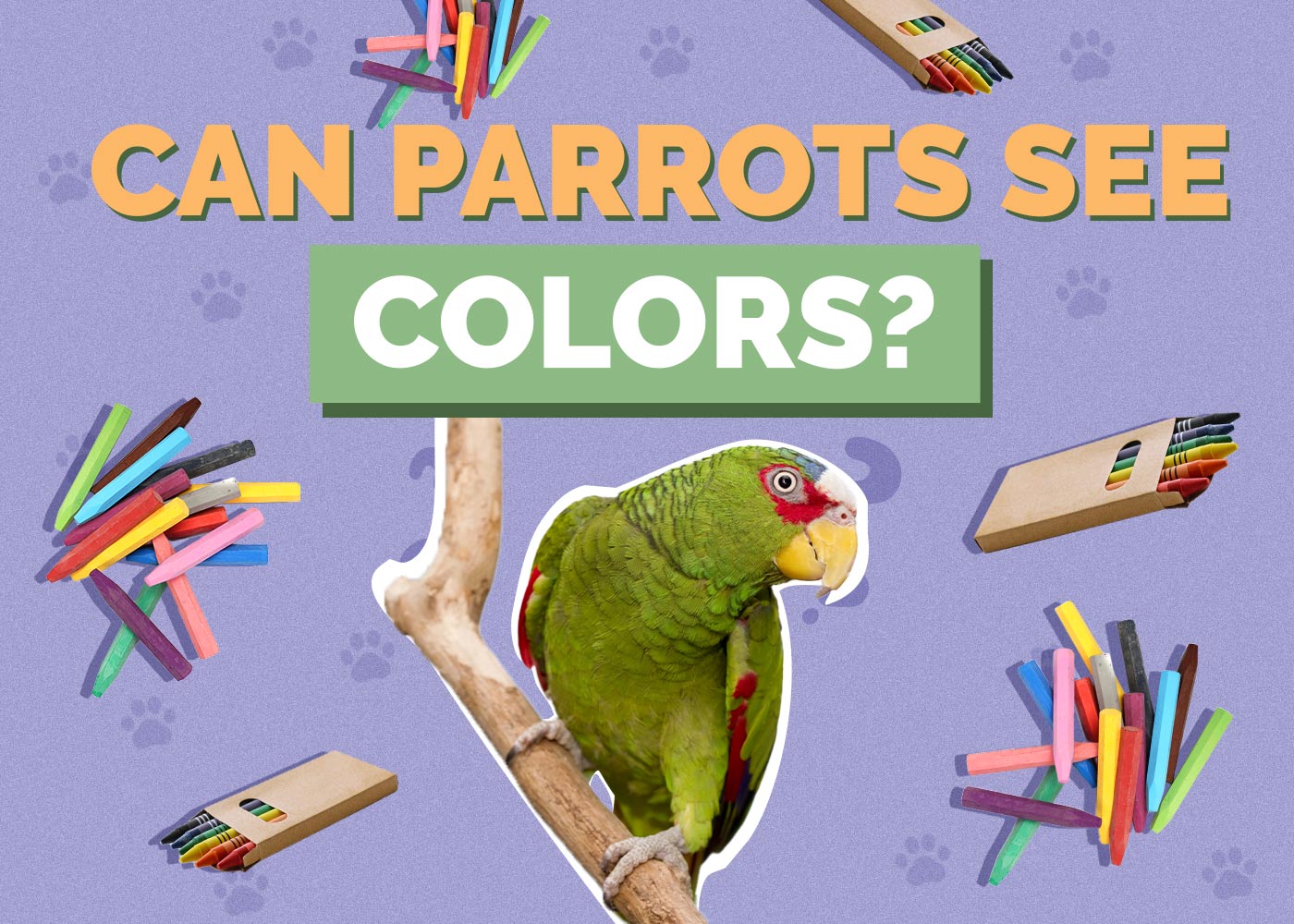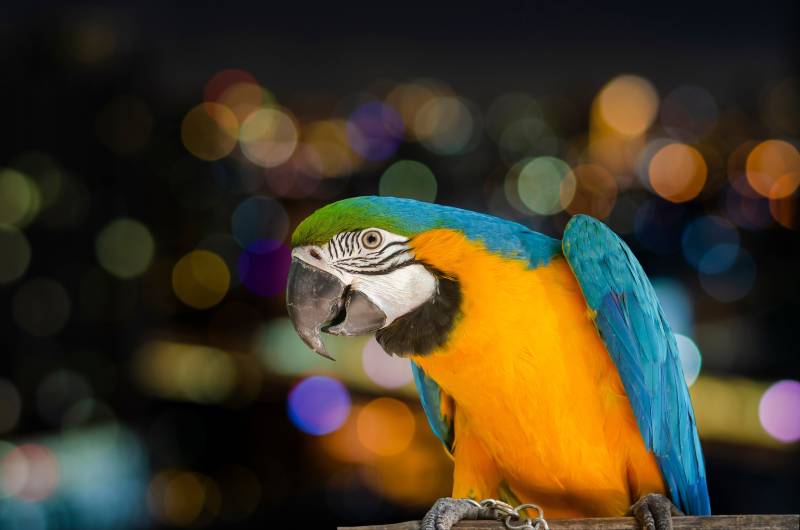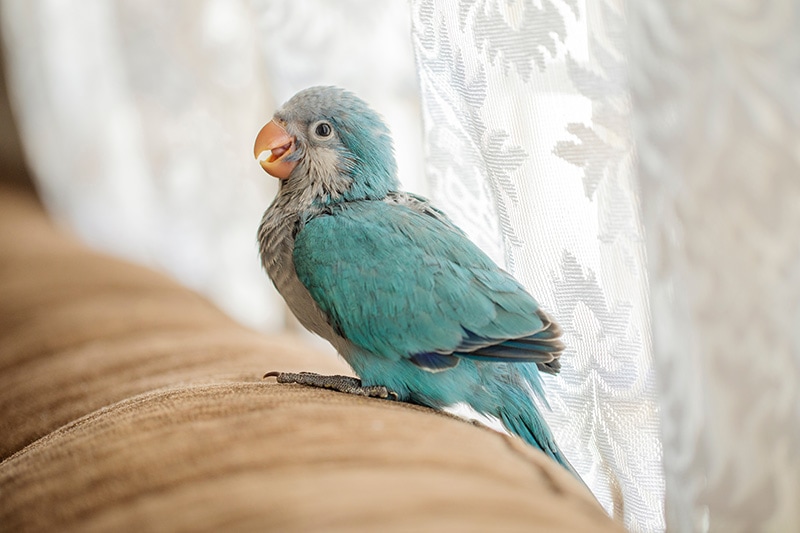Can Parrots See Color? Vet Approved Facts & FAQ
Updated on

Parrots are among the most colorful of all birds, which certainly appeals to pet owners. However, have you ever wondered if parrots can see color and appreciate their good looks? Well, as it turns out, not only can parrots and other birds see color, but they’re also better at it than humans!
Keep reading to learn how parrots see color and how this ability compares to our vision. We’ll also answer frequently asked questions, including why seeing color is vital for parrots.
How Do Parrots See Color?
Within the retina, there are different types of photoreceptors called rods and cones. Rods detect different intensities of light, whereas the cones are sensitive to the different wavelengths of light, which is how we see color.
Most birds, including parrots, see color thanks to four photoreceptor cones present in the retina. The cones are distinguished by the colors of light that they absorb.
For parrots, they are red, green, blue, and ultraviolet (UV) light. Combining all the cones allows the parrot to visualize a wider spectrum of color than we can, as humans only the receptors for red, green, and blue. Birds also have a colored oil droplet within their cone cells. Avian researchers believe the oil allows birds to see even more colors.

Frequently Asked Questions
Why Is It Important for Parrots to See Colors?
Simply put, birds need excellent vision to survive. It allows them to spot predators, avoid collisions while flying at high speeds, choose mates, and find food. Their fantastic color vision serves two crucial roles for parrots: helping them locate food and attract mates.
Parrots use their color vision to help them find food. For example, some berries are known to give off UV light. Many parrots live in dense jungle environments, so distinguishing edible food is an advantage. Plants that rely on birds to aid their pollination also take advantage of color vision, with bright red flowers signaling to birds that there is a delicious nectar meal to be found. When the bird eats the nectar, they collect pollen on their feathers, which they then carry to other flowers, aiding plant reproduction.
Like many other birds, parrots rely on their bright colors to attract mates. Male parrots are usually more colorful because they compete for females’ attention. Scientists have discovered that some feathers reflect UV light, which may help other birds identify them.
Female parrots may rely on acute color vision to give them clues about potential mates, but that has not been officially supported by research. At the very least, colorful parrots look even brighter to each other than they do to us.

Can Parrots See Colors in the Dark?
As daytime (diurnal) birds, the parrot’s vision is not adapted to see well in the dark. While they have an array of cones, they have relatively few rods. Nocturnal birds, like owls, generally have bigger eyes with more rods that increase their sensitivity to light, and they also have a structure called the tapetum, which reflects more light onto the retina. This is why you will notice most parrot species disappear into a next box, corner, tree branch or hollow once that sun sets.
A rare species of nocturnal Australian parrot appears to have a similar arrangement of cones to rods, making it poorly equipped for its nighttime lifestyle. According to research, the Australian parrots have similar eyes to other daytime birds, with smaller optic nerves and optic lobes in the brain. The parrots cannot see well in the dark and have a hard time spotting objects like fences in time to avoid flying into them. Unfortunately, their vision issues may be one reason these Australian night parrots are critically endangered. There is limited information about the presence of a tapetum in this unusual bird, but photographs suggest the presence of one.
Conclusion
Parrots, like all birds, do indeed see color. They are not well equipped for night vision, but having four types of cone photoreceptors means that they are able to see the world in an array of colors, far greater than we can. Possessing such color sensitivity is what allows these beautiful birds to make the most of their colorful plumage in a way that we can only imagine. This ability allows them to communicate visually on their search for mates, as well as locate food sources from great distances. Being able to detect the ultraviolet color wavelengths suggests that even birds that may look plain to us, may in fact display more variation in their plumage than we can appreciate. The apparent tradeoff is in their very limited night vision, but, with the exception of the Australian Night Parrot, this poses no problem for these sun-loving birds.
Featured Photo Credit: Jill Lang, Shutterstock













